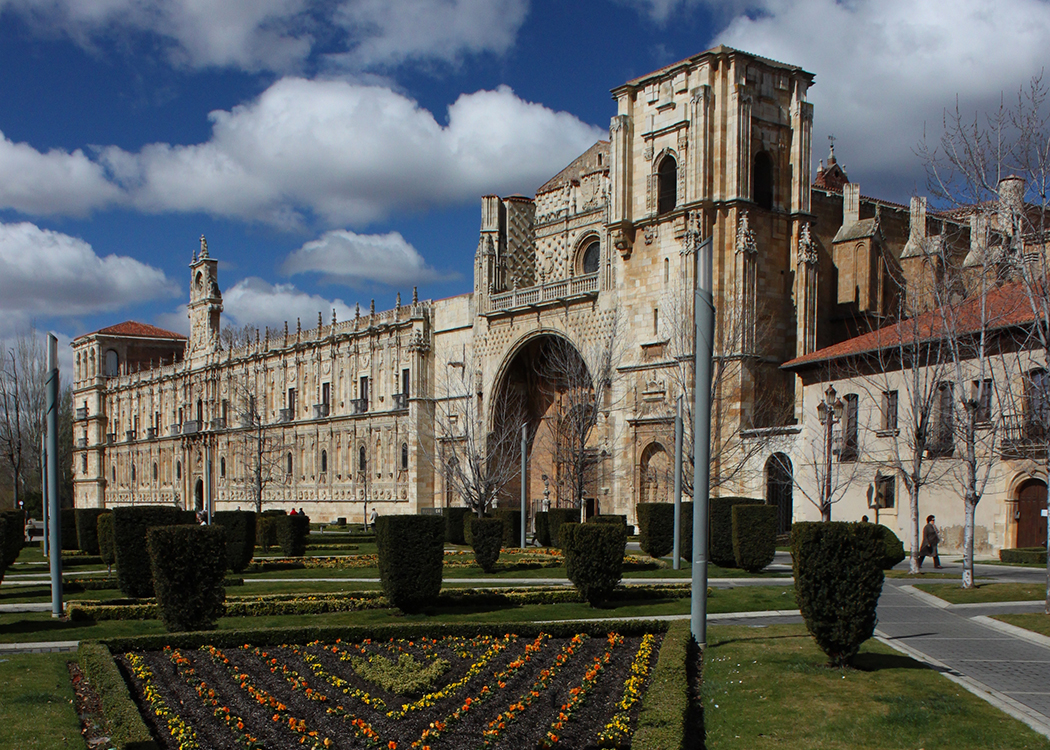 Previous Day |
León → Villar de Mazarife 19.8 km (12.3 mi) |
 Next Day |
¡Qué alivio, todos!
On account of last night’s adventures, I slept in all the way until 7:00 this morning! It was really bizarre to not pack up and bust out the door to put in some early miles. In fact, I’ve made an executive decision: Today, I’m going to wander around town and see some sights! Then, I’ll put in a short jaunt to Villar de Mazarife and call it a day? Sound good? You bet!
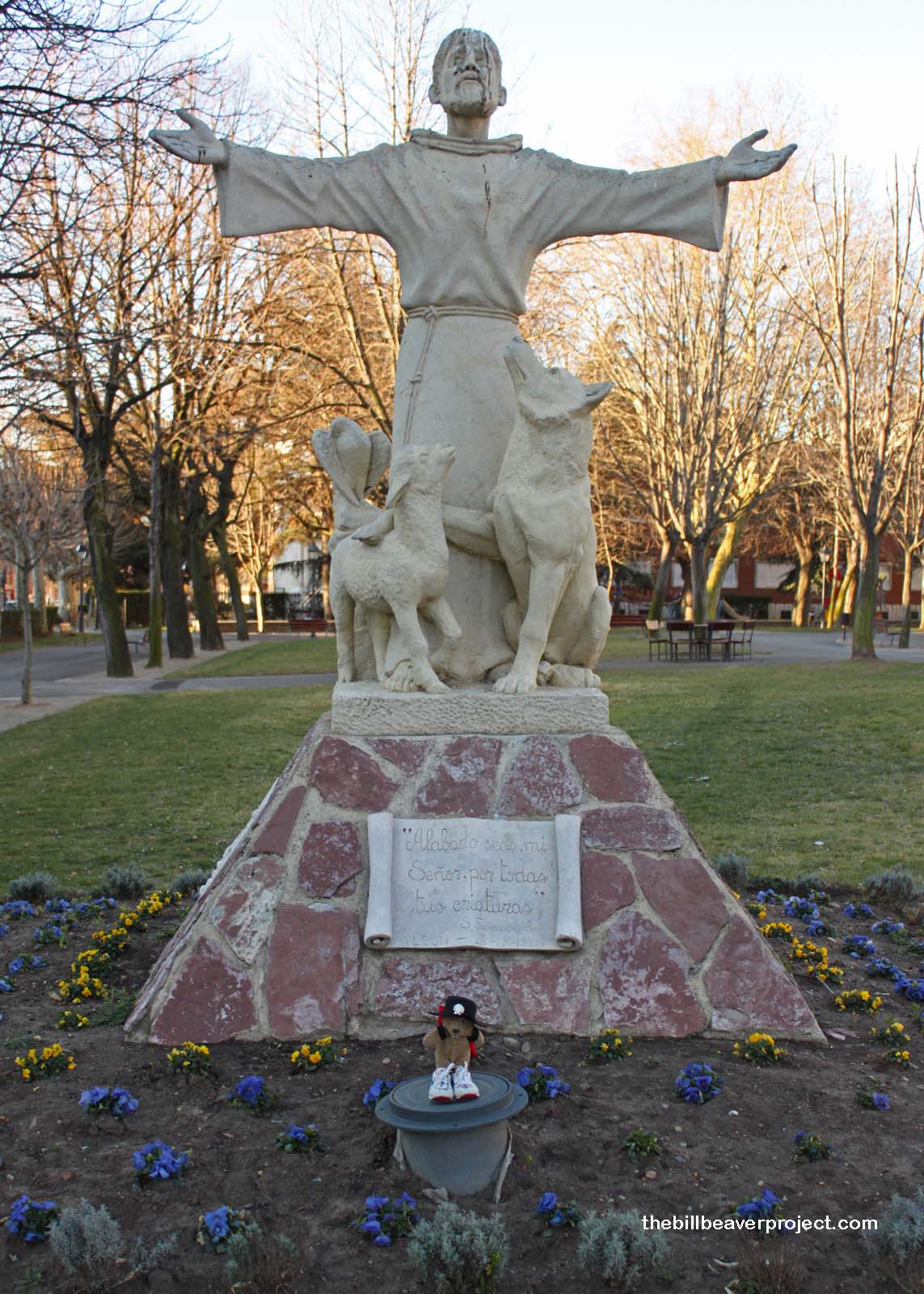 |
Boy, was it ever chilly this morning! The thermometer read -2° Celsius! That’s about 28° Fahrenheit! Nonetheless, I set out to walk to the center of the city. In the last few days I’ve learned that walking warms things up pretty quickly before the 9:00 temperature jump, so I decided not to take the bus back to the Camino after all. That allowed me to visit the Parque San Francisco, which was created in 1818 as a green space for agricultural experimentation!
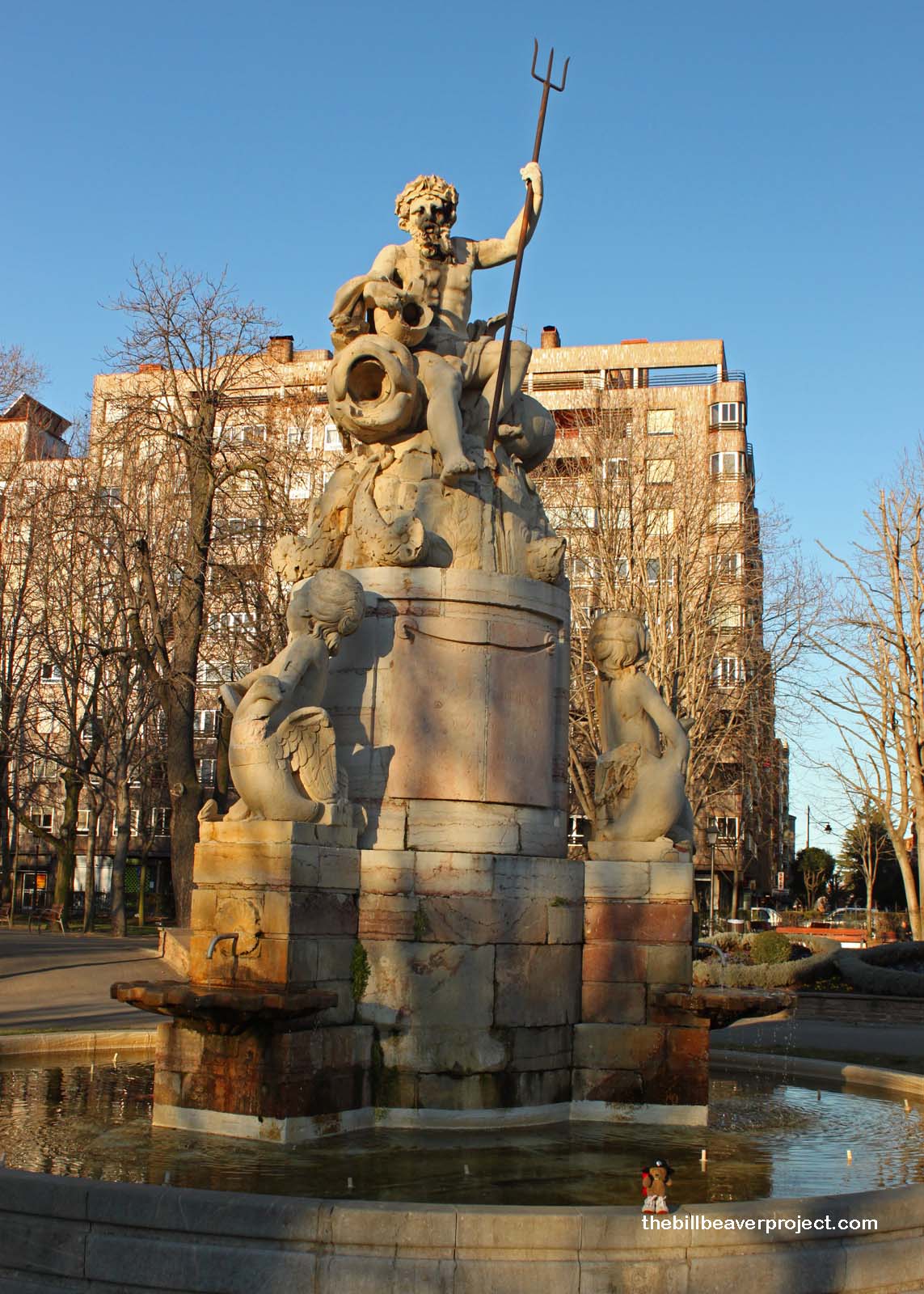 |
That doesn’t mean they were breeding animal-plant mutations to go forth and take over the world (though that would have been cool). Instead, it was used to test climate hardiness. That’s how I was able to find cedar trees from Africa, Lebanon, and the Himalayas all in the same place! Though this experimentation only lasted seven years, the park has collected more than just trees, like the fountain of Neptune, which was originally situated in front of the Cathedral, or the statue of St. Francis of Assisi (my favorite saint!), sculpted on his 800th birthday by Muñoz Alique!
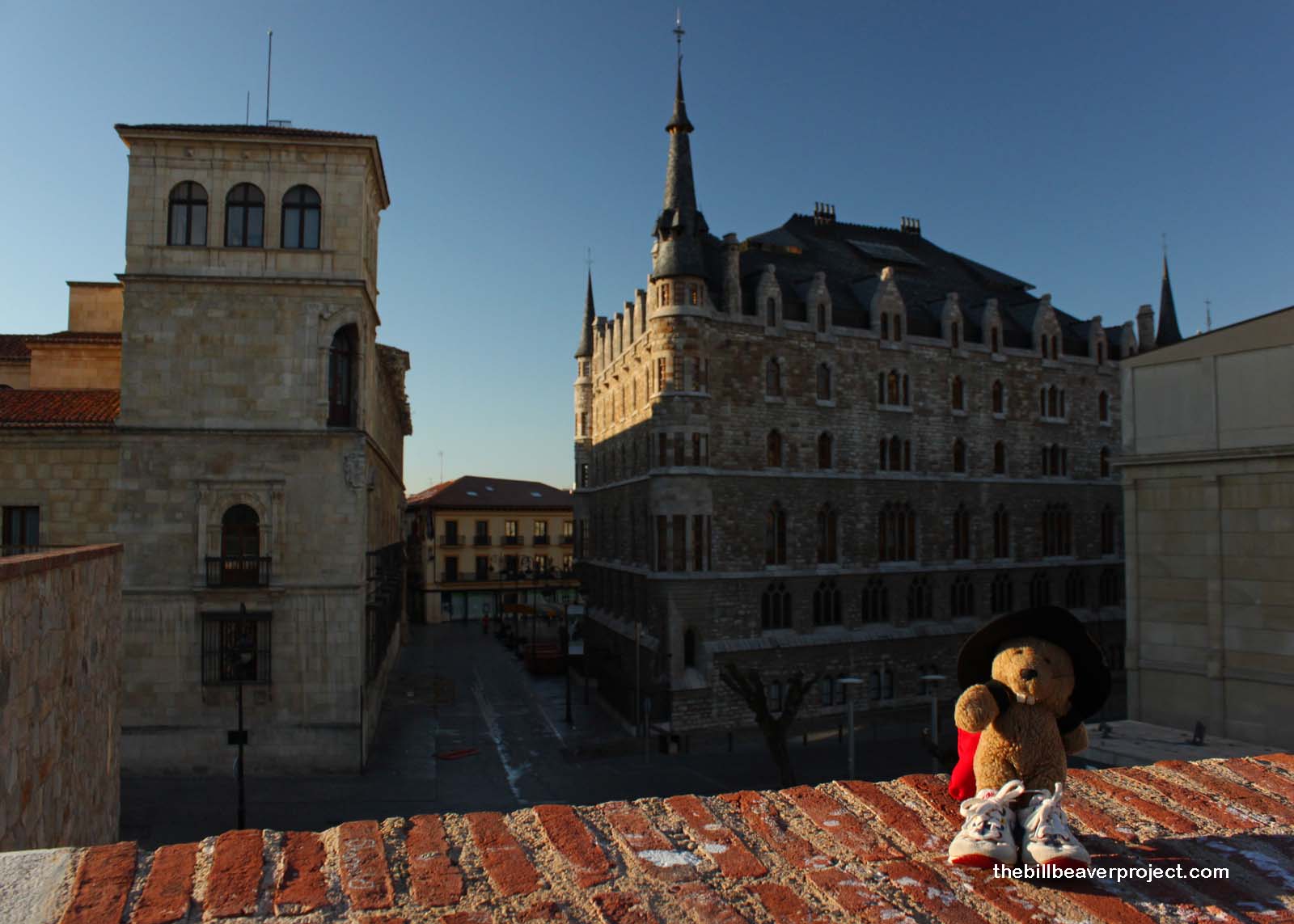 |
Since I was out pretty early, I expected everything to be closed, so I bypassed the Museum of León and climbed up on an elevated platform to take in some sights from above, like the Casa de los Botines, one of only three works by Antoni Gaudí outside of Catalonia! How, then, did it come to be in León, you might ask? Well, the textile company that owned this site, called Casa Botines, made most of its purchases from a Catalan company owned by Mr. Eusebi Güell, who then recommended that they employ Mr. Gaudí to make their building sparkle!
Even though the Leonese distrusted Catalans working in León and spread rumors that the building would collapse completely, Mr. Gaudí completed his work in 1892, just 10 months after he started! Since then, the building has stood strong with only a few aesthetic remodels, like one in 1953, when the Monte de Piedad y Caja de Ahorros de León bank, now the building’s owner, decided to restore the crumbling statue of St. George at the entrance. When they took it off its foundation, they found a lead pipe containing some of Gaudí’s original floor plans and sketches, a list of names of everyone who worked on the building, and even some newspaper articles from during construction! It makes me wonder what other treasures might be hiding in buildings around the world!
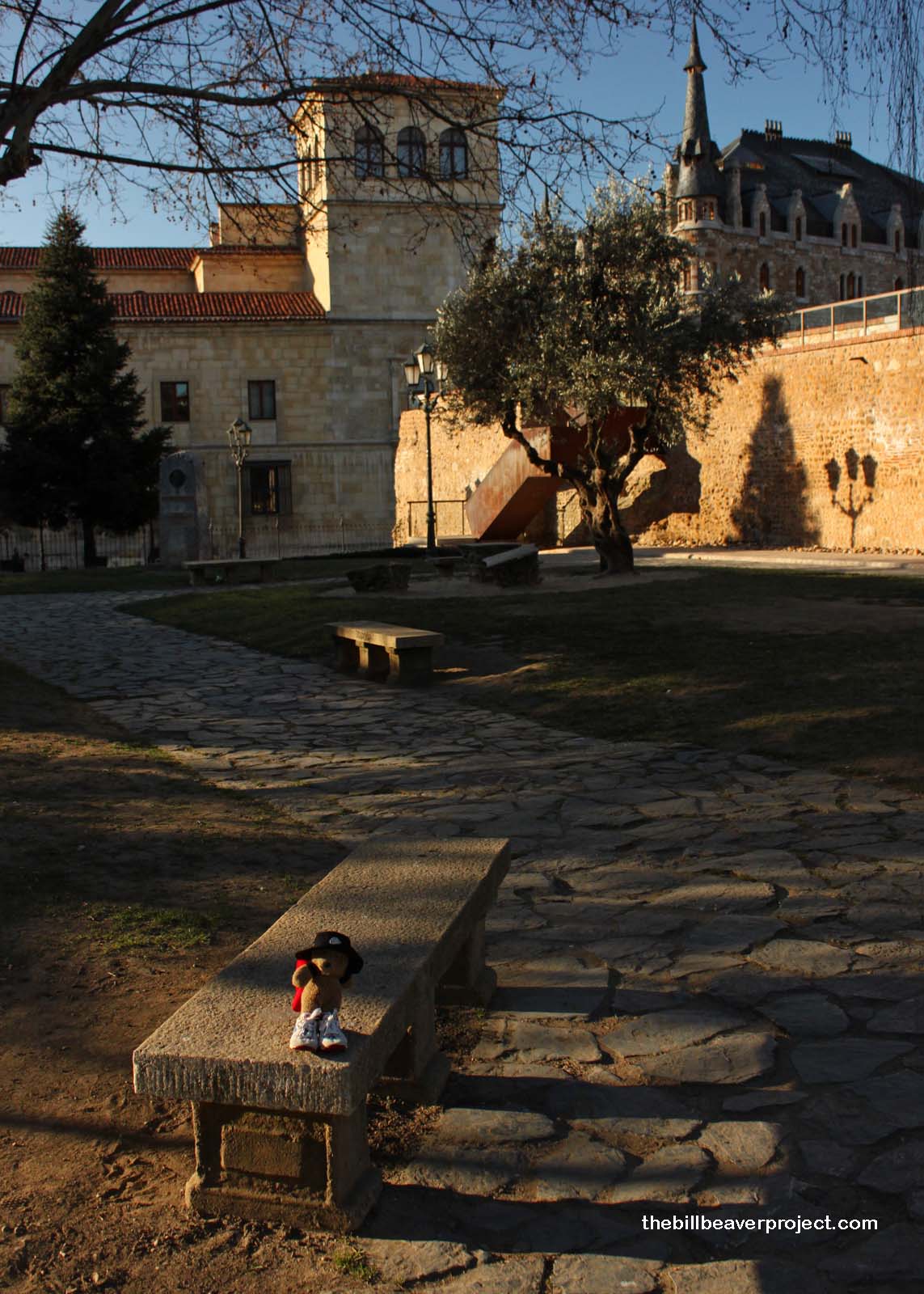 |
I didn’t want to spend too much time on the platform, which smelled like pee, but after I’d descended and entered the Parque del Cid, I found out that I’d been standing on one of the city’s ancient walls! In fact, did you know that, only two years ago, León celebrated its 1,100th birthday? It became a kingdom in 910 AD! Though the city is pretty old, there are new things sprouting here all the time, like this park! It’s only been around since 1972, but it’s important nonetheless as a rest area and a place to honor artists, like choral composer, Ángel Barja, and Nicaraguan poet, Rubén Darío.
It’s very important to remember that the world is not done making music and art! Sure, artists have achieved extraordinary things across the centuries, but that doesn’t mean all art is history! While new technology is reinventing the way art is made, to the chagrin of many “purists,” I believe that vision is vision, no matter the manner in which it is composed!
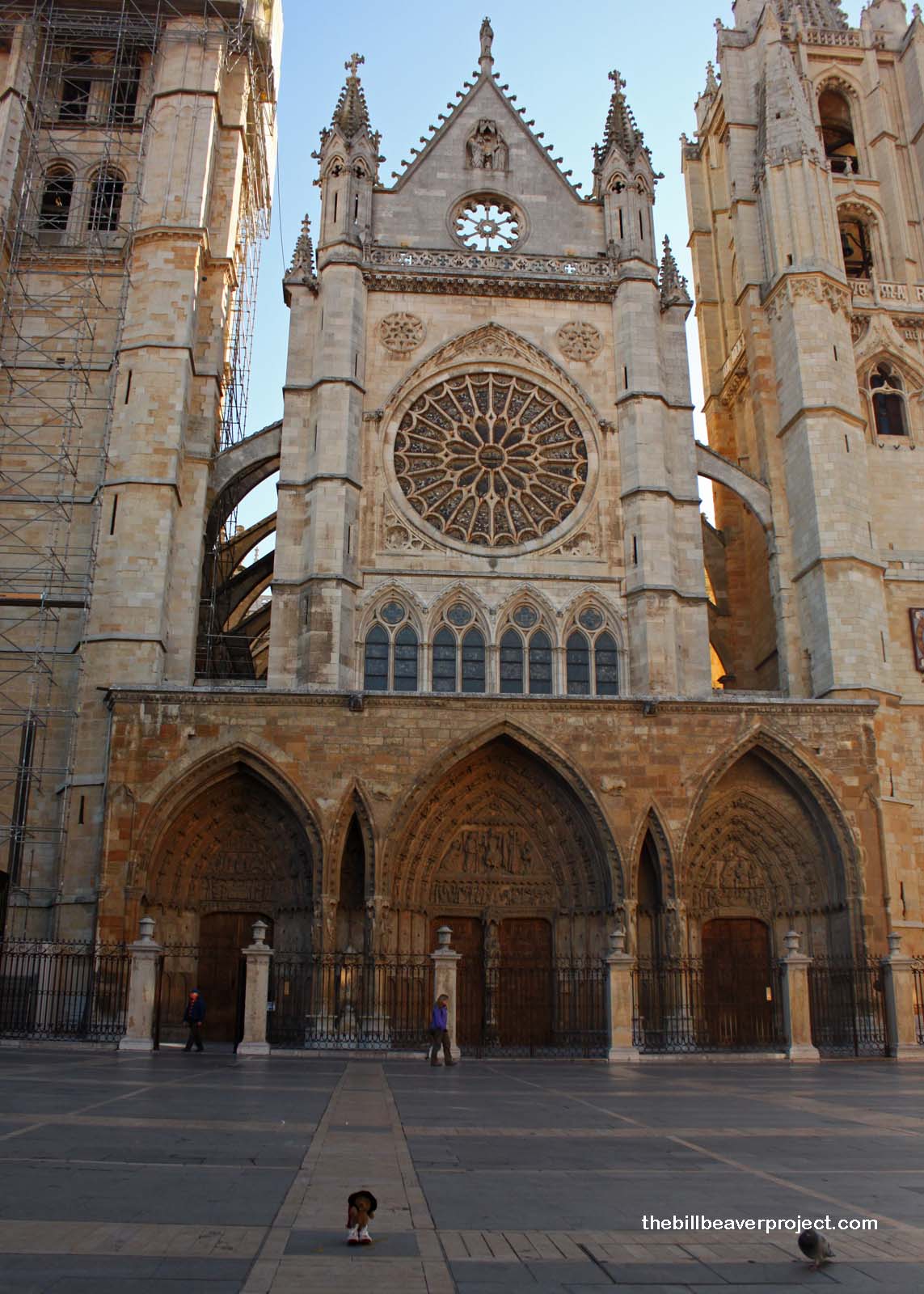 |
That being said, ancient artists made some really impressive works! For instance, the 13th century Cathedral of León is extraordinary, but not for the most obvious reasons. Now, I don’t want to downplay the magnificent exterior, or the vast stained glass windows. I could easily have sat and pondered their details for hours, which is probably what people did when the Masses were in Latin! However, the treasure of this Cathedral, in my opinion, was one of its smallest pieces!
I don’t take pictures in churches, so I have to refer to someone else’s photo of the Virgen del Mercado, because this sculpture captured something missing from many other Pietà sculptures. In this case, Mary is not the embodiment of grace. Her face is contorted as she tries to subdue the emotions wracking her body, but she’s still a mother holding the body of her boy! If you look hard, you can almost see her glistening tears! This expression nearly moved me to start crying too. That is a powerful experience anywhere, especially in a cathedral!
Outside, I ran into Lee, who was still fighting through her ankle pain, and Andrew, who could not find a place to charge his phone, because today is St. Joseph’s Day, a national holiday, which has many similarities to Father’s Day in the States! Normally, people take the day off work to treat their dads to dinner and create big, papier-mâché scenes, called fallas which they light on fire! That gave me a good idea for a new Father’s Day tradition. I may have to find a fuzzy hat and burn it! Maybe he’ll be able to see the light from where he is… Luckily for all parties, at least the bakeries stayed open for El Dia del Padre!
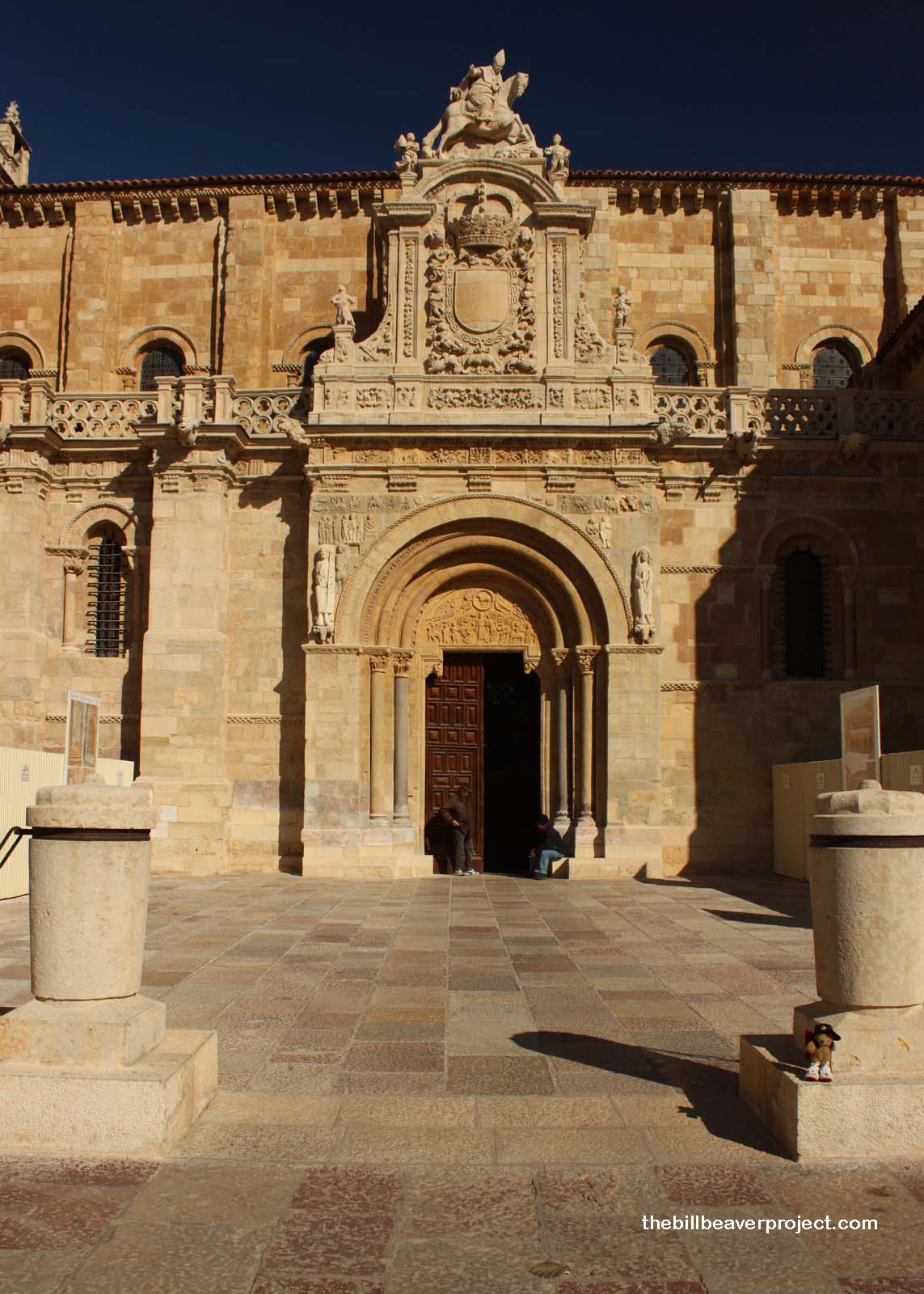 |
As morning drew to a close, I turned back toward the Camino. Along the way, I stopped again at the Basilica de San Isidoro. Since I visited the inside of the basilica last night, I took a left turn into the Pantheon de los Reyes, a rebuilt Roman temple to Mercury, now a final resting place for 33 Spanish kings and queens! I was too late to catch the tour, so I saw as much as I could with the time allowed. There were ornate chalices, reliquaries, and artifacts dating back to the 10th century, including fabric from ancient Persia and Baghdad! They were still so colorful and their handmade designs so precise that I was astounded at how wearable they looked after 1,100 years!
Upstairs, I walked around the library, which had books ten times bigger as I am! Most of them were kept behind glass and cages, and I wondered if any of them would be opened ever again. What a strange day that must have been when the books shut their covers for the last time in a millennium! Kind of sad, too…
Inside the Pantheon proper, the actual Roman temple remains, there are some ancient paintings of the life of Jesus, as well as the tombs of the many kings and queens, at least, the tombs that were left after a mass desecration by Napoleon’s troops. One of the most notable pieces of the Pantheon, however, is the Latin calendar, painted along an arch. It told me that I was born in Iunius, the month of the first threshing!
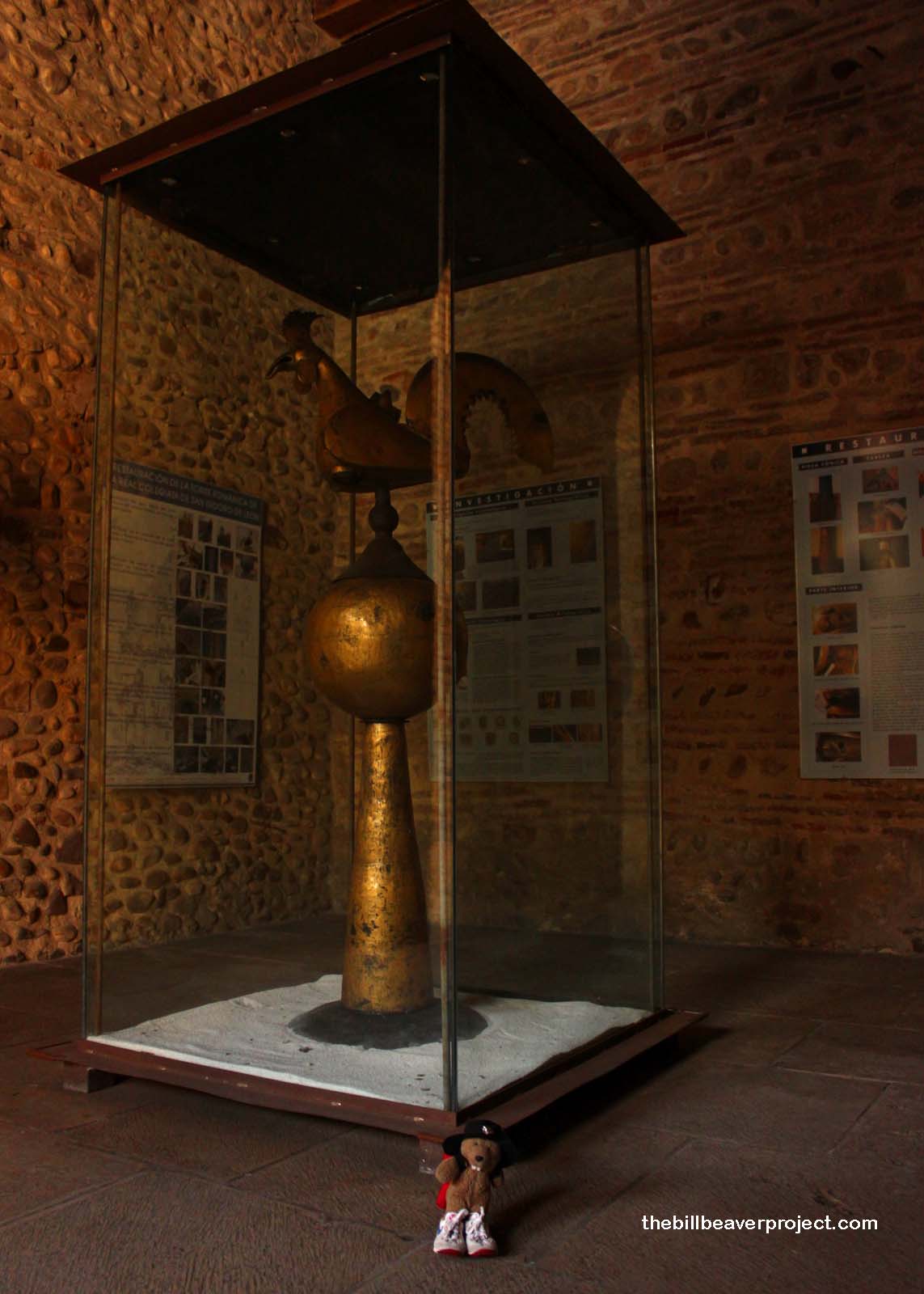 |
From there, I stepped out into the courtyard, where a side room now houses the famous golden rooster of San Isidoro! It used to be on the roof of the basilica, but it was taken down recently for restoration. Do you know what they found under the gold? There were pollen grains from Iran dating back to the 6th or 7th century! That means the rooster was either a gift or a tool of conquest from before the Moors took over Spain! It’s likely that this was one of the roosters that Muslim conquerors used to replace crosses on top of Spanish churches! All of this came from a few ancient grains of pollen! Isn’t palynology awesome?
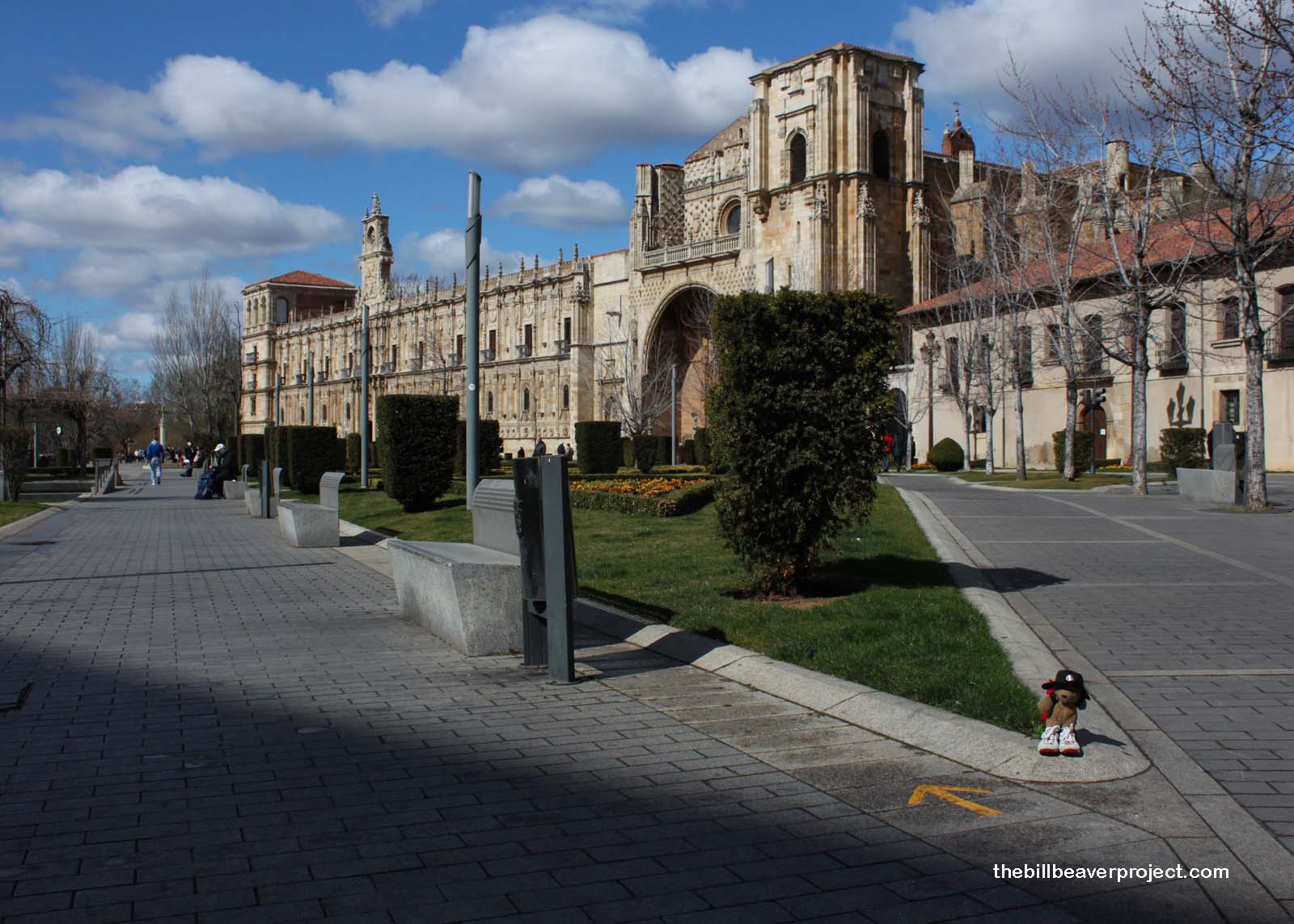 |
After bidding farewell to the Pantheon and its rooster, I had to get out of town. I headed down past the bombastic Convent of San Marcos, now a museum and luxury hotel, but only had enough time to admire the exterior as I passed. It was still quite a sight though! My path took me over a bridge and past the blooming Parque Quevado. As I later found out, anyone who passes over this bridge without seeing the cathedral has fallen victim to some poor Camino marking! That means it is actually possible to walk right past a big city like León! That would have been a humongous shame!
The way out of León was long, steep, and hot! I passed some more neat hobbit homes like in Moratinos (there’s even a bar nearby called “Middle Earth”) and reached Virgen del Camino. The church here, circa 1961, has the most unique sculpture work of any other church I have seen so far! It was built over an old chapel to the Virgin Mary, who, legend has it, appeared to a shepherd in 1505 and told him to build her a chapel on this site. When he asked how he should prove to the bishop that she was behind the request, Mary took his slingshot and told him to fire a stone at the chosen site. All would be revealed. So, with the bishop present, he fired the stone at the site, and it immediately turned into a huge boulder! The bishop set to work right away!
Right after Virgen del Camino, the route split, giving me the option of following the road or going through the countryside. Though the road route is considered the original, I preferred the fresh air and the quiet.
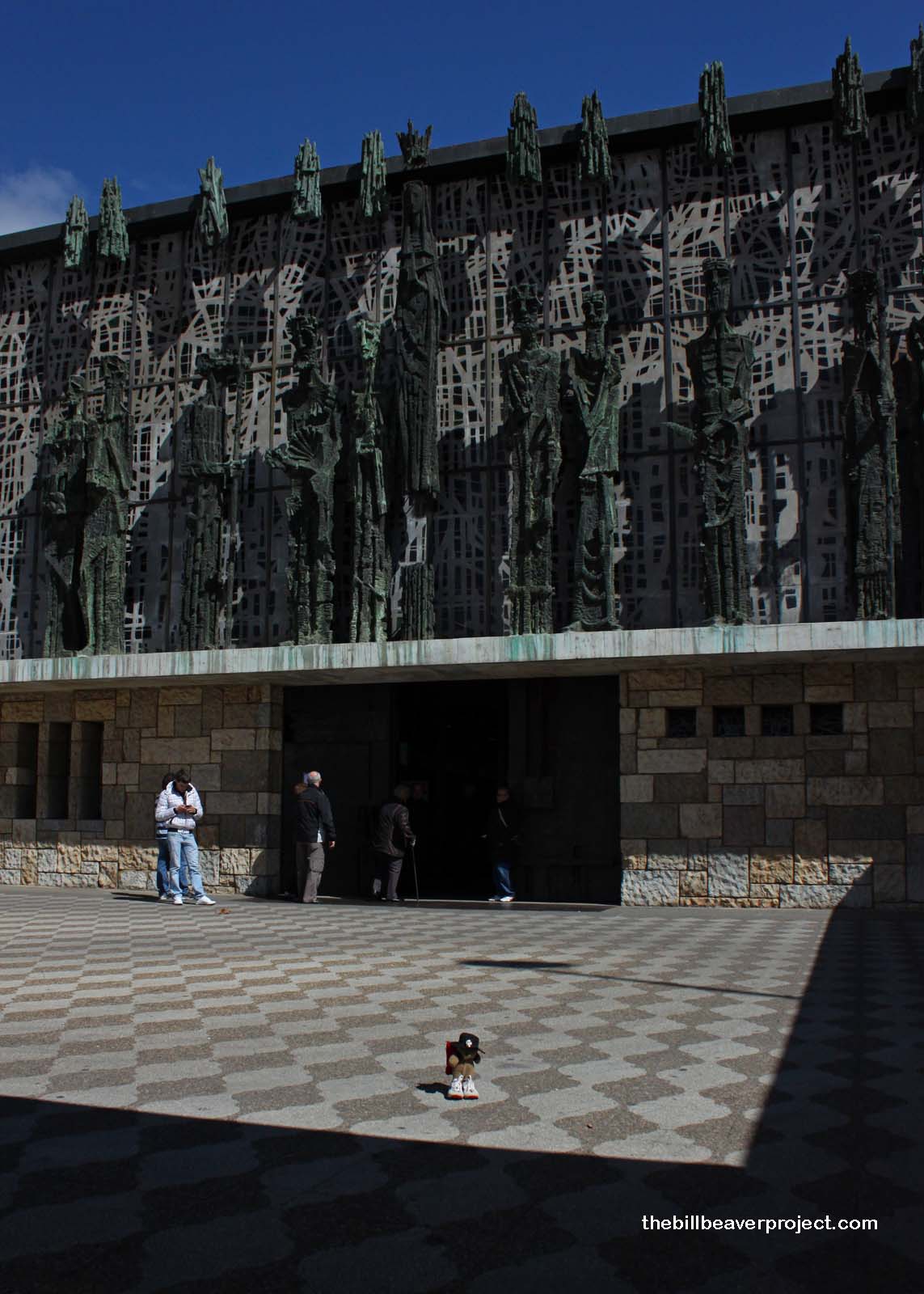 |
The route into Villar de Mazarife, while a comparatively short jaunt, felt long at the end of the day. The clouds couldn’t tell whether or not they wanted to rain, but they broke up some of the heat along the way. Searching for cloud faces helped with the monotony too!
I stopped at the first albergue in town, San Antonio de Padua after I was hailed by a few of the folks I’d met back in Calzadilla de los Hermanillos. Niall from Scotland and Aaron from Cornwall had already gone through a bottle of wine and were opening another before heading to the bar. They had made the aforementioned bridge mistake and didn’t realize they had completely skipped León until they reached Virgen del Camino! Someone really ought to update the arrows in town if this is a common problem! I declined their offered glass of wine, but since the evening had turned chilly, I followed them to the bar, where I had some hot tea and watched some old timers playing dominoes.
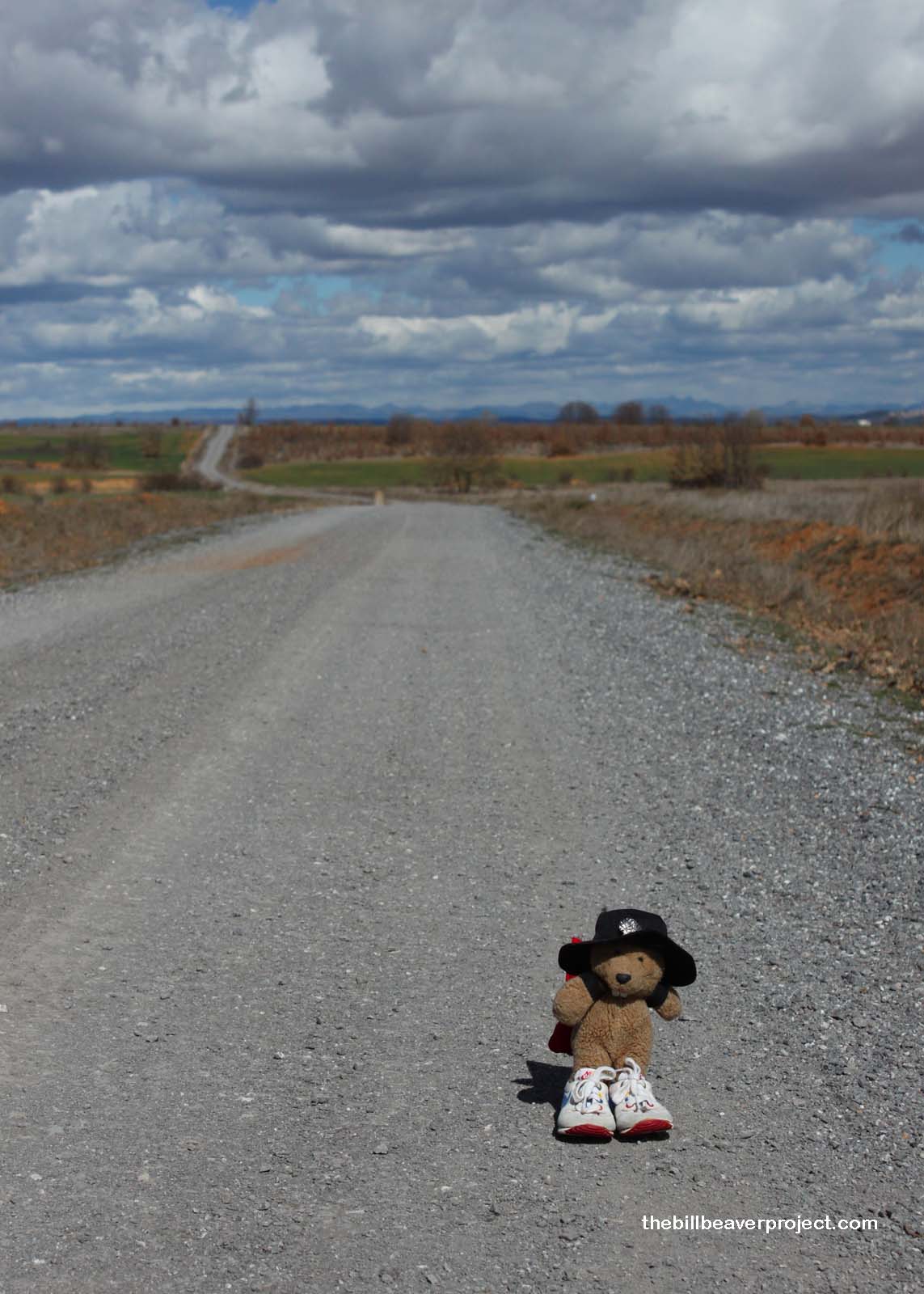 |
Once everybody had finished what they were drinking and we were halfway back to the albergue, I realized something was amiss. I’d left my camera back at the bar! Oh no! I’d been drinking irresponsibly! It didn’t matter how much my feet hurt; I ran all the way back to the bar!
Sometimes I forget that I’m in rural Spain and not Los Angeles. The bartender had hung my camera on a peg where I could see it when I came back. That was very considerate of her! So, we all went back to the albergue for a gourmet dinner, prepared by Maestro Sergio, who also decided to give us a Queimada in honor of this being his last night as a solo hospitalero. What’s a Queimada? It’s a big, burning drink, often mixed with an incantation! We each got a turn at pouring the burning liquid into the cauldron, which was really neat, though as always, the fire made me nervous!
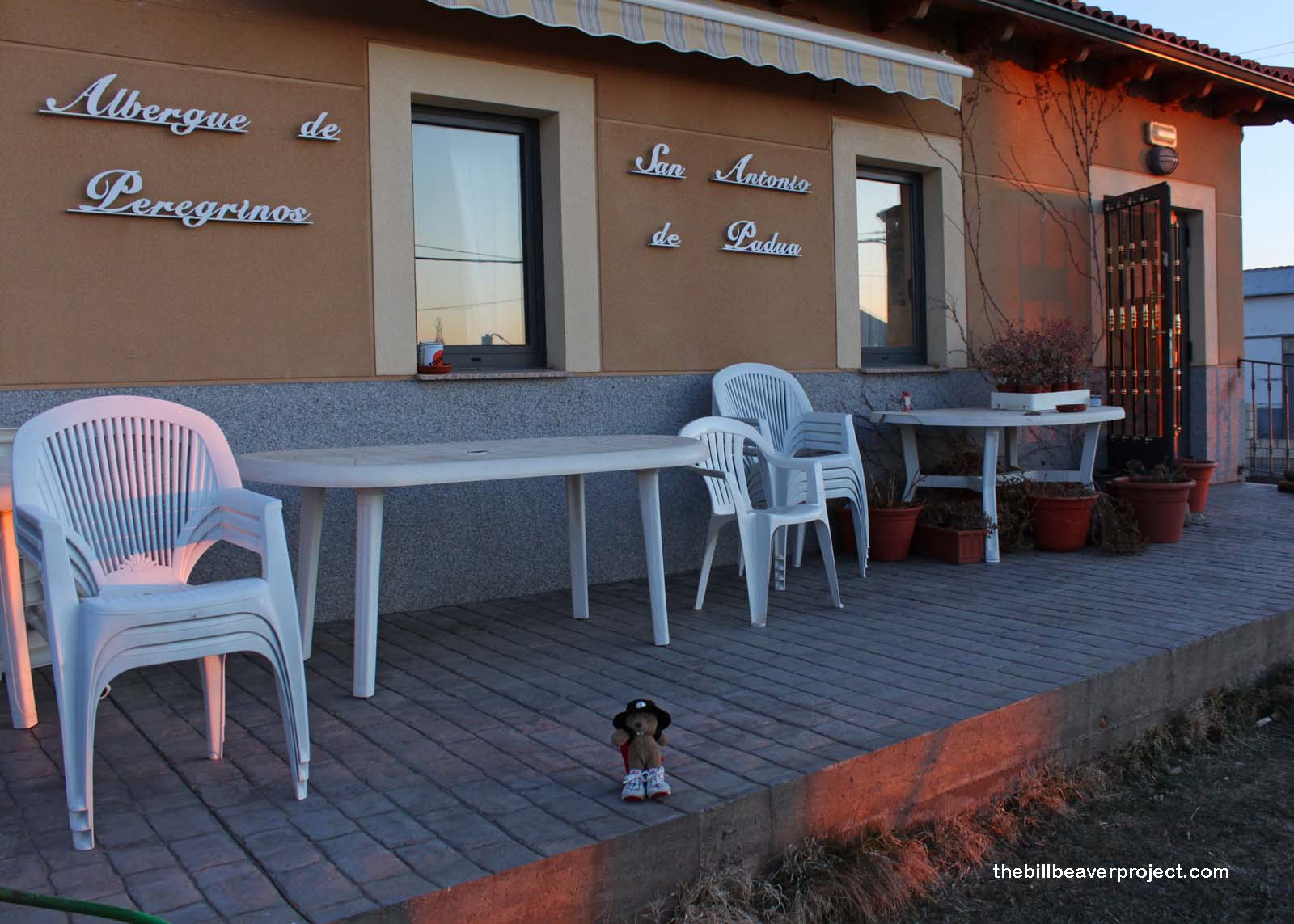 |
For a short day, this sure turned into an exhausting one! I climbed up onto my bunk, absolutely spent, but with a real sense of having done something big. I’d done a day at my own pace, seen most of what I’d wanted to see, and even made some new friends, that is, until Sergio brought what was left of Aaron staggering into the room, wild eyed, and grabby! He’d taken a bit too much Queimada after the beers and wine. It was kind of scary, actually, as he lurched over and reached to pick me up, very much like a zombie! I didn’t know what to do, so I told him very firmly to go to bed. He did, then came back. This time, I had to hit him with my tail and repeat, more firmly, “Go to bed!” He did not quite make it to bed, but instead settled into a chair and began snoring raucously. Is this how a new beginning is supposed to work?
Buen Camino!

 Previous Day |
Total Distance Walked: 479.6 km (291.7 mi) |
 Next Day |
